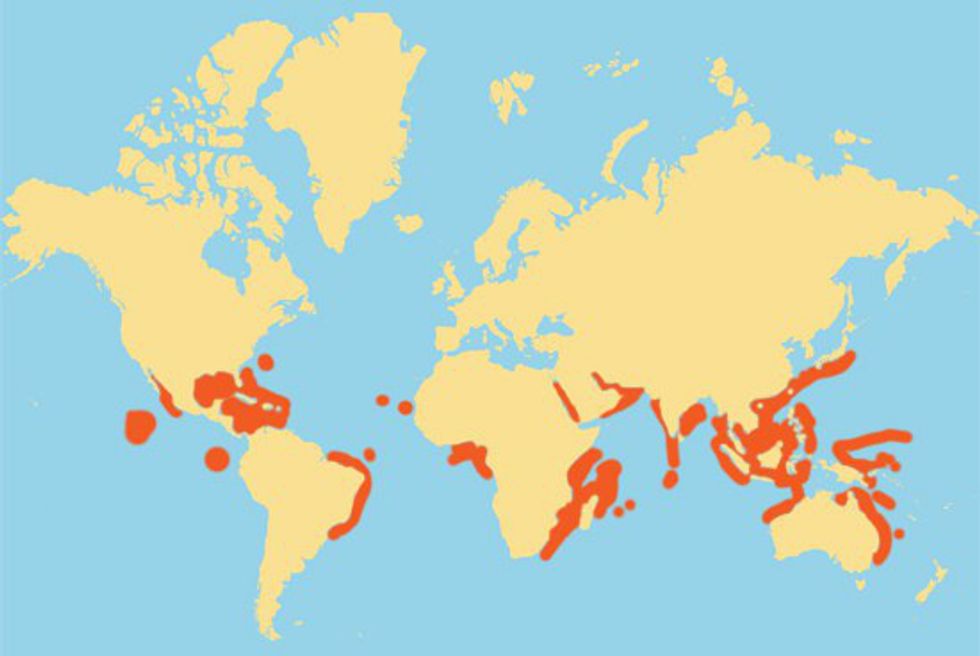Coral reefs are one of the most beautiful parts of the ocean. Whether you have seen a reef in real life, or just in pictures, it is hard to not appreciate their beauty. Reefs can be found all over the world in sub-tropical and tropical waters. Coral is extremely beneficial to have in the world's oceans. Although it is associated with many benefits, coral reefs only make up about two percent of the ocean.
Coral reefs are the most diverse marine environment. Globally, they fall just behind tropical rainforests in diversity. Coral reefs are home to about a quarter of marine fish, crustaceans, mammals, and reptiles. They single-handedly can support the entire marine food web. Needless to say, these small areas are teaming with a high concentration of life. This means they play a crucial role in reproduction for many marine species. Without the reefs, a large portion of marine life would be lost. Reefs are important for the filtration of water because most coral and sponge species are filter feeders. They also serve as carbon sinks, removing carbon dioxide from the environment.
They also benefit life on land by providing protection to the shore. Reefs protect the shore by reducing the size of waves and preventing erosion from occurring. Large waves are generated by storms out at sea, and reefs aid in reducing the size of the waves once they reach the shore. This saves humans millions of dollars each year in damage to coastal communities.
Reefs provide many economic benefits to humans. Many communities surrounded by reefs are dependent on the fishing and tourism industries. These industries combine to generate around $30 billion dollars annually WWF. The Great Barrier Reef in Australia generates around $1 billion alone each year WWF. A large percentage of the world's population depend on the coral reefs in order to survive.
Currently, around 75% of the remaining coral reefs are threatened by a changing climate Defenders. Ocean water temperatures have been rising due to warming around the planet. The high temperatures cause the symbiotic relationship within the reefs to fall apart. An example of one of these relationships is that between the coral itself and algae. The algae gives the coral color. The breakdown of the relationship results in the bleaching of the world's coral reefs. Eventually, with no algae, the coral will die. Ocean water is becoming increasingly more acidic as the environment changes due to increased carbon dioxide being absorbed by seawater. The increased acidity breaks down the skeleton or coral. The result will be the disappearance of coral reefs if the world's climate continues down the same path.
There are several ways in which humans can help in preserving coral reefs around the world. The first is by working to ensure ocean waters are clean. The water's composition depends on the waste we put into the oceans from our land use, as well as what is absorbed from the atmosphere. The second is to help protect species populations that are abundant in the reefs. These species help to remove the toxins that are harming the reefs. They also aid in keeping the balance of an extremely complex ecosystem. The number one priority should be to reduce the about of carbon released into the atmosphere. A reduction in carbon would help to reverse the warming of water and changing chemical composition, helping to protect the coral reefs that offer so much to our planet.



















